How to Fix MacBook Stuck on Apple Logo While Booting?

(updated)
Get Free Scanner and check your computer for errors
Fix It NowTo fix found issues, you have to purchase the full version of Combo Cleaner. Free trial available. Combo Cleaner is owned and operated by Rcs Lt, the parent company of PCRisk.com read more.
MacBook or MacBook Pro Stuck on Apple Logo While Loading? Here's how to fix it!
MacBook's applications make the best use of its hardware potential. However, it's not a secret that something may happen even in Apple products. There are plenty of circumstances when errors and crashes may occur. Note that these crashes are not a major issue in most cases, and they can be easily fixed even by less tech-savvy computer users.
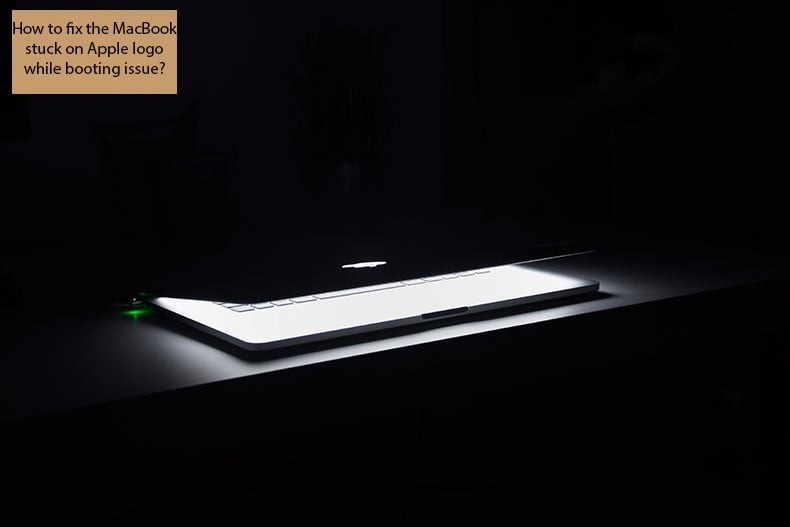
The quickest fix when troubleshooting MacBook issues is trying to restart your device. Unluckily, if your issue is related to MacBook's boot sequence, a simple restart would not be possible. If your MacBook gets stuck when booting up, this doesn't automatically mean that your computer has a hardware issue.
Try following these easy tips on how to solve or troubleshoot this problem. In this article, we will describe the most common solutions for this specific problem. These steps might also help you fix or diagnose any future issues with your MacBook (including software and hardware crashes).
Video showing How to Fix MacBook Stuck on Apple Logo While Booting
Table of Contents:
- Introduction
- Create a backup first
- Reboot Mac without any peripherals
- Boot your MacBook into a safe mode
- Attempt to repair your hard drive
- Run Apple Diagnostics
- Video showing How to Fix MacBook Stuck on Apple Logo While Booting
Download Computer Malware Repair Tool
It is recommended to run a free scan with Combo Cleaner - a tool to detect viruses and malware on your device. You will need to purchase the full version to remove infections. Free trial available. Combo Cleaner is owned and operated by Rcs Lt, the parent company of PCRisk.com read more.
Create a backup first
A computer's boot failure is quite a serious issue and may result in hard drive replacement. No one would want to lose their data, so the very first step you should take, ensure you have an up-to-date backup file. Otherwise, create at least one.
We recommend creating and store a couple of them in unrelated storage. The best option would be an external drive and cloud storage. Since your MacBook cannot boot, you will need an external data traveler to save a backup file. Once you are ready to create a backup file, attempt to access Mac's Recovery Menu:
1. Hold down Command and R keys while pressing the power button to turn on your computer. When you see the Apple logo, you can release the keys.
2. In the window, choose Disk Utility and click on Continue. When the sidebar appears, select the drive to which you will write your backup - usually, it is called Macintosh HD, unless you have changed its name.
3. In the toolbar, you will find the “New Image” icon. Choose your external drive to which you are going to save the backup. This procedure will create a compressed disk image of your hard drive content.
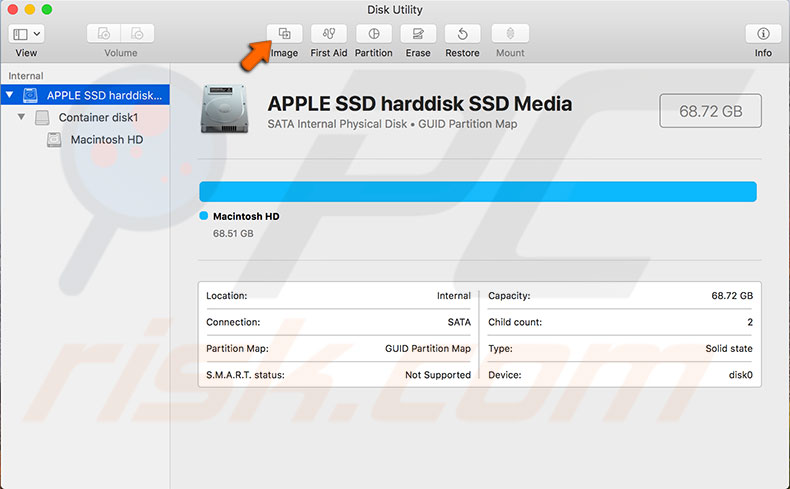
Alternatively, you may use another Apple computer to make a copy of data using target disk mode. However, Thunderbolt or FireWire connections are required in both devices for this method. When you connect your Mac through Thunderbolt or FireWire, one of the devices becomes an external hard disk on the other.
Reboot Mac without any peripherals
The first and easiest step to diagnose your problem maker would be to disconnect all unnecessary peripherals, if possible, leaving only the Apple-branded keyboard and mouse. In case your laptop booted without peripherals, try to connect them individually.
Restart after each of them is the best option. There are cases when the problem is caused by a certain combination of connected peripherals. If disconnecting all peripherals could not solve the boot issue, try the steps below.
Boot your MacBook into a Safe Mode
Safe mode is one of the most useful options whenever you encounter computer problems, especially if it's not hardware-related issues. His feature rebuilds Mac’s boot database on your hard drive and often resolves some computer issues.
1. To boot the computer into Safe Mode, begin by shutting down your MacBook.
2. Once it is fully turned off, turn it on again by pressing the Power button and holding the Shift key until the Apple logo appears.
3. If your Mac is fully loaded, the first thing you need to do is clean up your Trash. When Trash is empty, open a Finder window and check your hard drive (by default, named Macintosh HD, unless you have renamed it).
4. Check if there is at least 10GB of free space. If not, move or delete some of your files. Media files are usually the biggest and easiest to move to another hard drive, either internal or external. After cleaning your Trash and making space on your hard drive, restart your Mac in the usual way (without holding any keys).
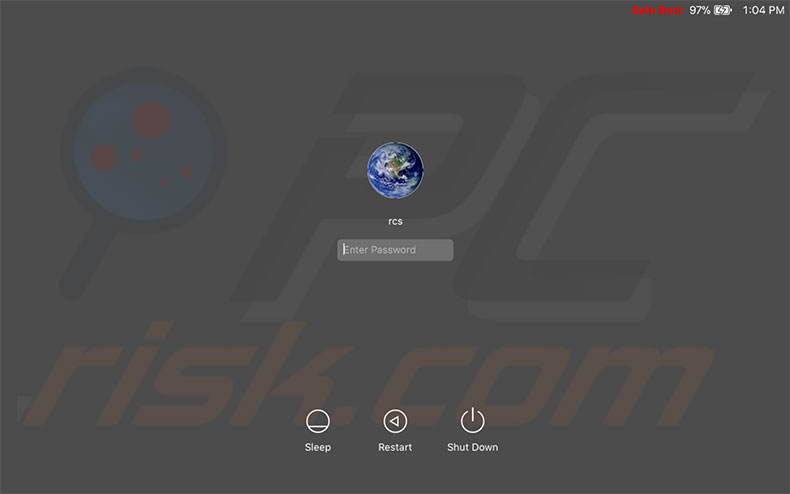 Note: be patient when loading Safe Mode. It takes much longer than to boot in a usual way.
Note: be patient when loading Safe Mode. It takes much longer than to boot in a usual way.
Attempt to repair your hard drive
If you reached this step, it means none of the tips above helped you, so it's probably something with your hardware. Luckily MacBooks can solve some issues related to hard drives by themselves.
1. First, what you need to perform to command your Mac to resolve issues is to enter Recovery Mode again. As it was mentioned, you need to hold down Command and R keys while launching your laptop.
2. If this method doesn't work, try to boot the Internet Recovery Mode by holding Command, Option, and R keys when launching or Shift, Option, Command, and R key combination.
3. Once a Recovery window appears, select Disk Utility, and on a side, choose your startup drive, which is called Macintosh HD (unless you renamed it).
4. Then click on First Aid (or Verify for older versions) and confirm your action by clicking Run. This feature will check your startup drive for any errors. If detected, click repair. Repeat the procedure until you get a message stating that everything is OK.
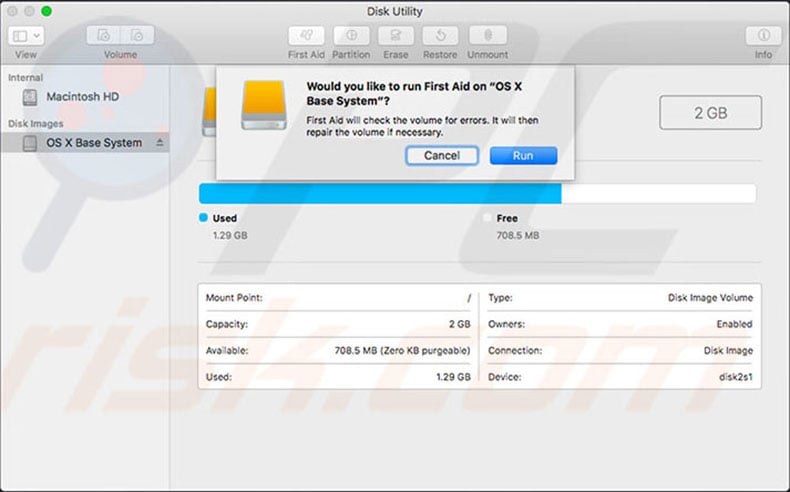
If you received a message stating that your hard drive has malfunctioned and you should replace it, bring your MacBook to Apple support or technician.
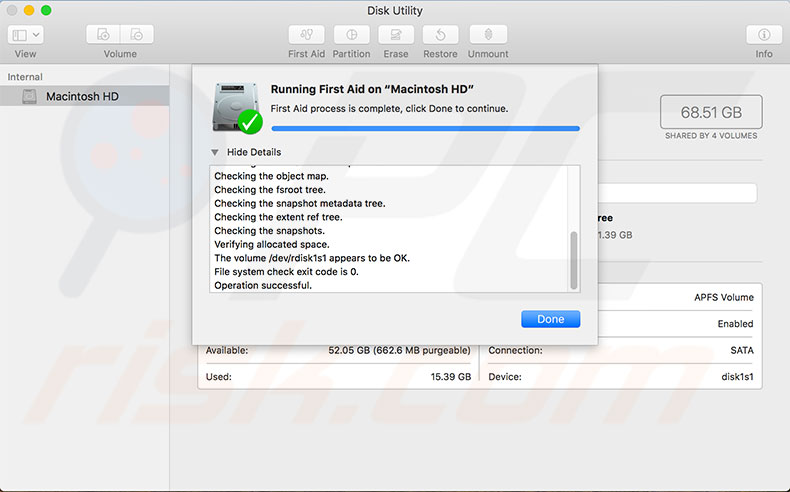
Run Apple Diagnostics
All Macs with OS X Mountain Lion or newer came together with the included Apple Diagnostics feature, which tests your Mac for hardware issues and suggests available solutions.
1. To launch Apple Diagnostics, disconnect all external devices except keyboard, mouse, display, Ethernet connection (if applicable), and connection to the power adapter.
2. Make sure that your Mac is on a hard, flat, stable surface with good ventilation. Shut down your Mac.
3. Turn on your Mac, then immediately press and hold the D key on your keyboard. Keep holding until you see a screen asking you to choose your language.
4. When it's finished, you will see detected errors displayed together with suggested solutions, further moves you can choose from the list.
5. To repeat the test, click ”Run the test again” or press Command and R.
For more information, including details about your service and support options, click ”Get started” or press Command and G.
To restart your Mac, click Restart or press R.
To shut down, click Shut Down or press S.
Share:

Karolina Peistariene
Author of how-to guides for Mac users
Responsible for collecting, analyzing, and presenting problem-solving solution articles related to macOS issues. Years of macOS experience combined with solid research and analyzing skills help Karolina provide readers with working and helpful solutions as well as introduce various features Mac has to offer.
▼ Show Discussion